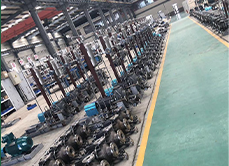Norwegian
- Afrikaans
- Albanian
- Amharic
- Arabic
- Armenian
- Azerbaijani
- Basque
- Belarusian
- Bengali
- Bosnian
- Bulgarian
- Catalan
- Cebuano
- Corsican
- Croatian
- Czech
- Danish
- Dutch
- English
- Esperanto
- Estonian
- Finnish
- French
- Frisian
- Galician
- Georgian
- German
- Greek
- Gujarati
- Haitian Creole
- hausa
- hawaiian
- Hebrew
- Hindi
- Miao
- Hungarian
- Icelandic
- igbo
- Indonesian
- irish
- Italian
- Japanese
- Javanese
- Kannada
- kazakh
- Khmer
- Rwandese
- Korean
- Kurdish
- Kyrgyz
- Lao
- Latin
- Latvian
- Lithuanian
- Luxembourgish
- Macedonian
- Malgashi
- Malay
- Malayalam
- Maltese
- Maori
- Marathi
- Mongolian
- Myanmar
- Nepali
- Norwegian
- Norwegian
- Occitan
- Pashto
- Persian
- Polish
- Portuguese
- Punjabi
- Romanian
- Russian
- Samoan
- Scottish Gaelic
- Serbian
- Sesotho
- Shona
- Sindhi
- Sinhala
- Slovak
- Slovenian
- Somali
- Spanish
- Sundanese
- Swahili
- Swedish
- Tagalog
- Tajik
- Tamil
- Tatar
- Telugu
- Thai
- Turkish
- Turkmen
- Ukrainian
- Urdu
- Uighur
- Uzbek
- Vietnamese
- Welsh
- Bantu
- Yiddish
- Yoruba
- Zulu
Telephone: +86 13120555503
Email: frank@cypump.com
nov . 06, 2024 19:10 Back to list
pump tank septic system
Understanding Pump Tank Septic Systems An Overview
A pump tank septic system is an essential component of modern wastewater management, particularly in areas lacking access to municipal sewage systems. These systems efficiently treat and dispose of wastewater from homes, ensuring environmental safety and public health. For anyone considering installing such a system, it is crucial to understand its components, operation, benefits, and maintenance requirements.
At the heart of a pump tank septic system is the septic tank, which acts as the initial treatment chamber for wastewater
. When wastewater flows from the household into the septic tank, the solid waste settles at the bottom, forming sludge, while lighter materials, such as grease and oils, float to the top, creating a scum layer. This process allows the relatively clearer liquid, or effluent, to remain in the middle layer, which then exits the tank and moves to the pump tank.The pump tank functions as a storage reservoir for the effluent. It is equipped with a pump that ensures the treated wastewater is evenly distributed to the drain field or leach field. This is particularly beneficial in properties where the natural slope of the land does not facilitate the gravity flow of effluent to the drain field. The pump is activated when the effluent reaches a certain level in the tank, ensuring a consistent flow to the leach field for further treatment and absorption into the soil.
pump tank septic system

One of the primary advantages of pump tank septic systems is their versatility. They can be effectively used in various terrains, including hilly or uneven landscapes, where conventional gravity-fed septic systems may not function efficiently. Additionally, pump tanks offer flexibility in terms of system design, allowing for customized solutions based on specific site conditions and wastewater management needs.
In terms of maintenance, regular inspections and pumping of the septic tank are vital to ensure the system operates effectively. On average, septic tanks should be pumped every three to five years, depending on household size, water usage, and the amount of solids in the wastewater. Neglecting maintenance can lead to costly failures, including backups and malfunctions in the pump tank, resulting in untreated wastewater entering the environment.
Moreover, homeowners must be mindful of what goes down the drains. Substances like grease, chemicals, and non-biodegradable items can disrupt the balance of the septic system and lead to clogs or damage. Adopting eco-friendly practices, such as using biodegradable cleaning products, can significantly extend the lifespan and efficiency of a pump tank septic system.
In conclusion, pump tank septic systems play a crucial role in managing household wastewater in areas without municipal services. By understanding their components, operation, and maintenance needs, homeowners can ensure that their systems function effectively, protecting both public health and the environment. Investing in regular maintenance and adopting responsible usage practices will help maximize the longevity and reliability of these essential systems.
-
ISG Series Pipeline Pump - Chi Yuan Pumps | Energy Efficiency&Compact Design
NewsAug.03,2025
-
ISG Series Vertical Pipeline Pump - Chi Yuan Pumps Co., LTD.|High Efficiency, Low Noise, Durable
NewsAug.02,2025
-
ISG Series Vertical Pipeline Pump - Chi Yuan Pumps | High Efficiency, Low Noise
NewsAug.02,2025
-
ISG Series Vertical Pipeline Pump- Chi Yuan Pumps Co., LTD.|High Efficiency&Compact Design
NewsAug.02,2025
-
Heavy-Duty Mining Sludge Pumps - Wear-Resistant Slurry Handling
NewsAug.02,2025
-
Horizontal Split Case Pump with GPT-4 Turbo | High Efficiency
NewsAug.01,2025










